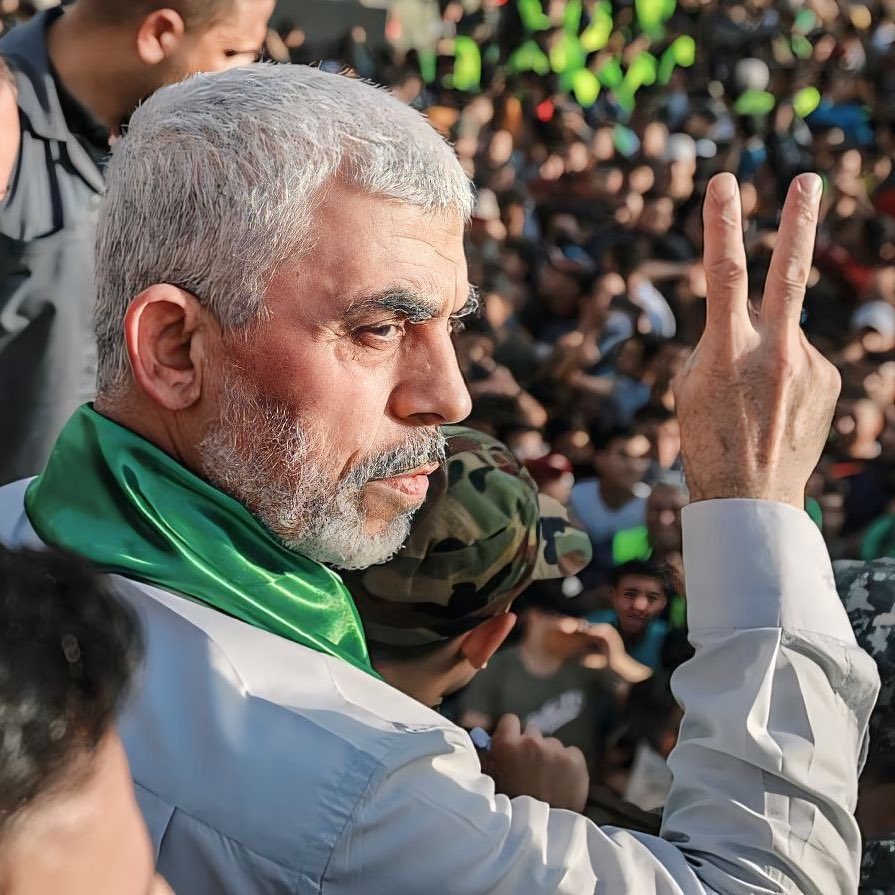On October 17, the Israeli Defense Forces (IDF) published drone footage capturing the last moments of ‘now-eliminated’ Hamas leader Yahya Sinwar. In this dramatic footage, Sinwar can be seen desperately hurling a stick at the IDF drone moments before his demise.
The footage, shared late on October 17 by IDF Spokesperson R.Adm. Daniel Hagari, shows Sinwar seated in a chair amidst the ruins of the building, with debris scattered around him and walls crumbling from previous shelling.
His face and head are largely obscured by a scarf, creating a stark image of desperation. Sinwar is seen throwing a stick towards the IDF drone.
💥In his final seconds, Yahya Sinwar stares down the IDF drone that enters the destroyed building he's hiding in, throws a stick at it. assuming the 4 terrorists they'd seen try to escape were dead, the IDF sent drone, not soldiers in, to avoid booby traps pic.twitter.com/5gKZunaXnL
— Noga Tarnopolsky נגה טרנופולסקי نوغا ترنوبولسكي (@NTarnopolsky) October 17, 2024
In his statement, R.Adm Hagari detailed the events surrounding Sinwar’s assassination. “Sinwar was hiding in an area that our forces had surrounded for a long period of time,” he said. “We didn’t know he was there, but we continued to operate with determination.”
Hagari explained that the operation was initiated after the IDF identified three terrorists fleeing through the streets of Gaza.

Sinwar, acting alone, entered a building. “Our forces used a drone to scan the area, which you can see here in the footage I’m presenting,” he added.
The IDF spokesperson further revealed that Sinwar had sustained a hand injury from gunfire during the skirmish. “He can be seen here with his face covered, in his final moments, throwing a wooden plank at the drone,” Hagari noted.
“We identified him as a terrorist inside a building, fired at the building, and then went in to search. We found him with a vest, a pistol, and 40,000 shekels,” he added.
Hagari highlighted the significance of Sinwar’s death, stating, “Sinwar was responsible for the most brutal attack against Israel in our history when terrorists from Gaza invaded Israel. For the past year, Sinwar tried to escape justice. He failed. We said we would find him and bring him to justice, and we did. It was Yahya Sinwar who decided to wage war with Israel while hiding behind civilians in Gaza.”
Who Was Yahya Sinwar?
Yahya Sinwar, the former leader of Hamas, was widely recognized as one of the principal architects behind the militant group’s terror attack on October 7, 2023.
He had become the most wanted individual in Israel. He was characterized by his obsessive, disciplined, and dictatorial nature, and as a veteran militant, he cultivated a deep understanding of his adversaries during his years of incarceration in Israeli prisons, where he learned Hebrew and meticulously studied Israeli tactics.
In the context of Israel’s military operations against Hamas, Sinwar was identified as a crucial target, earning him numerous ominous labels from Israeli officials, such as “the face of evil” and “the butcher from Khan Younis.”
After the assault on Israel, Prime Minister Benjamin Netanyahu stated on December 6 that it was “only a matter of time” before Sinwar would be found. Meanwhile, Israeli military officials had referred to him as “a dead man walking.”
Once a highly visible figure in the public eye, he had remained largely out of sight since the attacks, likely taking refuge in an extensive network of underground tunnels that provided cover during the Israeli siege of Gaza.

Sinwar was appointed as the new leader of Hamas shortly after Ismail Haniyeh, the group’s leader in exile, was killed in an explosion in Iran. However, Sinwar was in hiding in Gaza.
While Sinwar was often perceived as a hardline militant, some also recognized him as a pragmatic political leader. In 2017, he was elected as the political chief of Hamas’ key decision-making body, the Politburo in Gaza, reflecting his influence within the organization.
Born in 1962 in a refugee camp in Khan Younis, Sinwar’s family was uprooted from the Palestinian village of Al-Majdal, now Ashkelon in Israel, during the Arab-Israeli war.
In 1985, before the official formation of Hamas, he played a crucial role in organizing the Majd, a network aimed at exposing Palestinian informants collaborating with Israel. This group would later become part of Hamas’ broader security apparatus.
In 1988, Sinwar was sentenced to four life terms in prison for orchestrating the murders of two Israeli soldiers and four Palestinians accused of collaboration.
However, he was released in 2011 as part of a prisoner exchange that saw more than 1,000 Palestinian prisoners traded for Gilad Shalit, an IDF soldier held captive in Gaza for five years.
Sinwar hailed this exchange as “one of the big strategic monuments in the history of our cause,” largely due to his brother’s involvement as one of Shalit’s kidnappers, which ensured Sinwar’s inclusion in the deal.
Upon his release, Sinwar returned to Gaza, where he quickly gained notoriety for his violent treatment of suspected informants. While many viewed him as a hardliner, others acknowledged his strategic prowess.
He was instrumental in repairing Hamas’ relationships with Egyptian leaders, who had been wary of the group’s Islamist leanings, and successfully secured ongoing military funding from Iran.
Sinwar’s efforts to strengthen ties with Iran and its allies across the region had significant implications.
Nonetheless, the conflict he instigated not only involved Hezbollah but also triggered a renewed Israeli invasion of Lebanon, leading to direct exchanges of fire between Iran and Israel for the first time. This escalation has heightened fears of a wider and more devastating conflict in the region.
- Contact the author at ashishmichel(at)gmail.com
- Follow EurAsian Times on Google News




